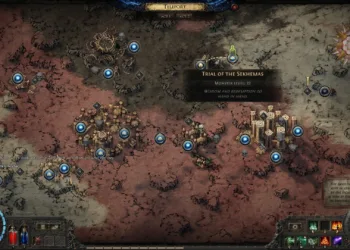Quick Links
Creating a new deck for a trading card game is a great way to showcase your creativity, particularly in a hobby that often emphasizes collecting and competition. In Pokémon TCG Pocket, assembling a deck is straightforward; however, due to the limit on deck size, you’ll need to keep certain restrictions in mind as you build.
Building a deck in Pokémon TCG Pocket is as easy as playing the game itself. If starting from scratch feels overwhelming, these tips and tricks can help you gain an edge in your PvP matches.
Deck Restrictions
When putting together a deck, it’s important first to consider the rules and limitations. What cards are selectable? How many duplicates can you include? What is the required minimum and maximum number of cards in your deck? These details might differ depending on the game and format.
In Pokémon TCG Pocket, your deck must have a specific count of exactly 20 cards. You cannot exceed this limit, nor can you play with fewer than this amount.
Unlike the traditional Pokémon TCG, you can only add two copies of cards that share the same name to your deck, meaning you can’t include all three versions of the Eevee if you intend to evolve into the various Eeveelutions.
The ex is considered part of a Pokémon’s name, which means you can include two Marowak and two Marowak ex in the same deck. However, since both card types evolve from Cubone, you can only have two out of the four total Marowak cards.
All cards in Pokémon TCG Pocket are permitted for gameplay in matches, and this policy will stay unless The Pokémon Company introduces a banned list or changes the sets available.
Additionally, your deck must feature at least one Basic Pokémon. You need to position a Basic Pokémon in the active slot at the start of every game, making it essential to have at least one in your deck.
Where to Find Your Decks
You can find your decks from the My Cards menu located at the bottom left of your home screen, or through the Battle menu found on the bottom right.
From either menu, look for the Decks icon. In the My Cards menu, it’s found at the very top, while in the Battle menu, it sits at the bottom, just above the menu bar.
Once you access the Decks menu, select My Decks to see the decks you own or create a new one.
What to Include in Your Deck
While every deck will have its own distinct style, there are some basic guidelines to help you create a functional deck.
Pokémon
Every deck must include at least one Basic Pokémon, but it’s advisable to include several others as well.
Select a key Pokémon to center your deck around. If it’s not a Basic Pokémon, ensure you have at least one copy of each previous evolution stage to enable its evolution.
Ensure you have no less than the same number of lower-stage Pokémon as fully evolved ones.
Having some support Pokémon to deal damage or stall while you set up your main Pokémon is also recommended, along with providing essential abilities.
Pidgeot is a versatile choice in many decks because its Drive Off ability allows you to Bench your opponent’s Active Pokémon once per turn, removing a major threat or forcing them to bring up a weaker Pokémon for you to knock out.
In tight deck spaces, the Supporter card Sabrina replicates a similar effect to Pidgeot.
Look for Pokémon with low-energy costs and high damage potential. Seek out Basic Pokémon that can inflict 40 damage with one Colorless Energy to strike a couple of times while you prepare your ace Pokémon for the decisive blow.
Trainer Cards
You can play an unlimited number of Item cards during your turn, yet you’re limited to one Supporter card. These cards can significantly improve your gameplay by helping you find the Pokémon you need quickly.
Poke Ball and Professor’s Research are essential cards to have in any deck. Poke Ball can retrieve a random Basic Pokémon from your deck, while Professor’s Research allows you to draw two cards. Both are invaluable in locating necessary cards quickly.
It’s wise to use Poke Ball before Professor’s Research to thin your deck and enhance your chances of drawing other needed cards.
Other Trainer cards can provide direct advantages in battles. For example, Giovanni adds ten damage to attacks made on the same turn it’s played, provided the attack inflicts at least ten damage. X-Speed is a valuable addition to most decks as it reduces the cost of Retreating an Active Pokémon—a crucial factor since Switch isn’t included in the game.
Most Trainer cards are tailored to fit the specific needs of your deck: Brock and Misty are great Supporters for Fighting and Water decks, respectively, but they won’t benefit a Fire deck. Choose Supporters that align with the type of deck you are constructing.

















